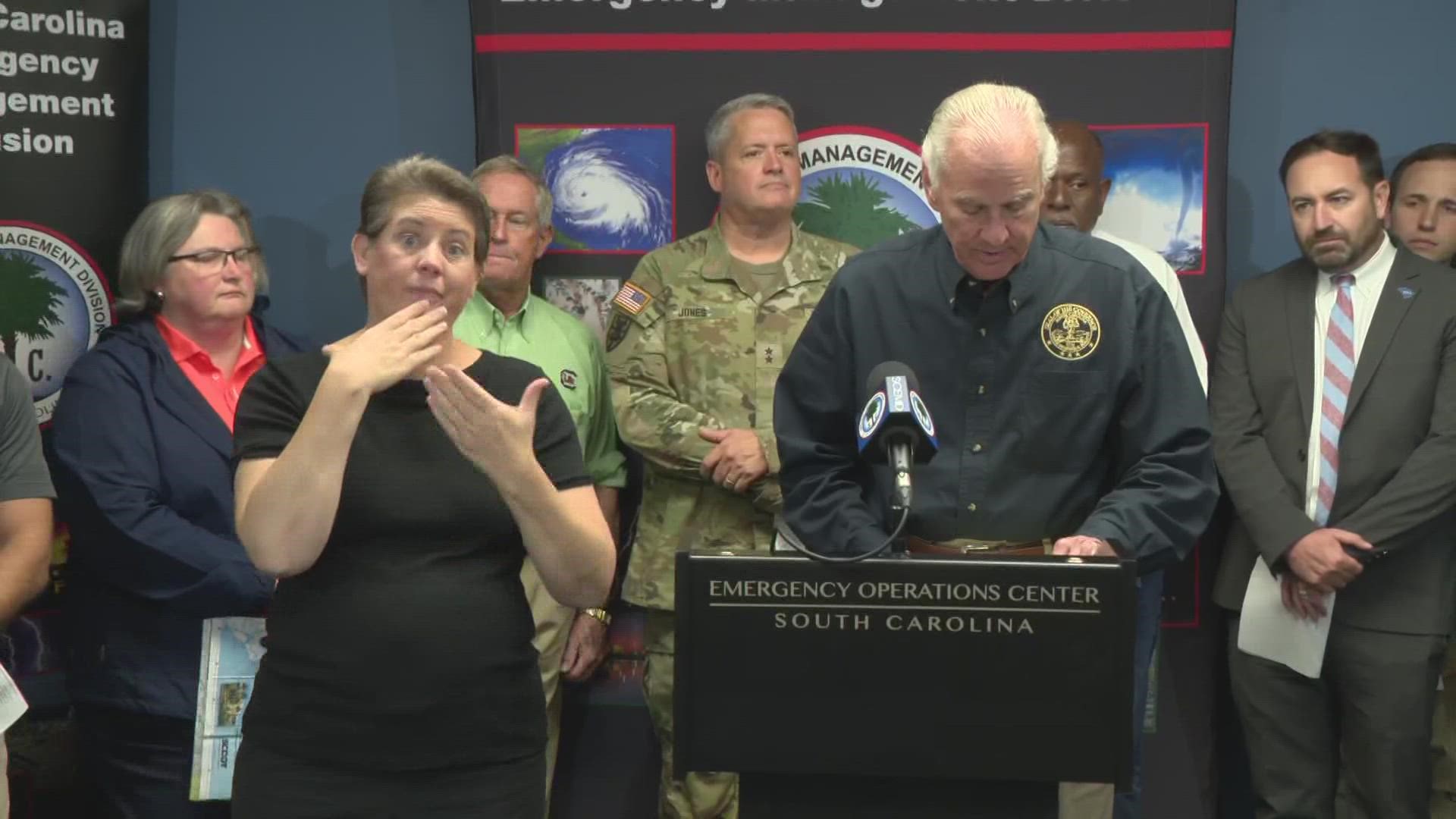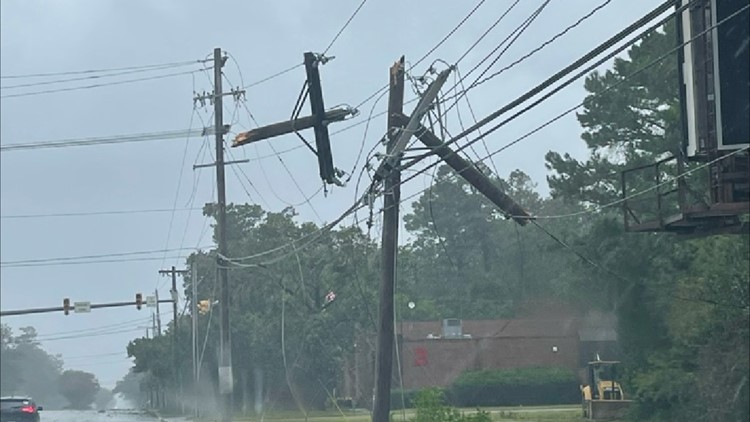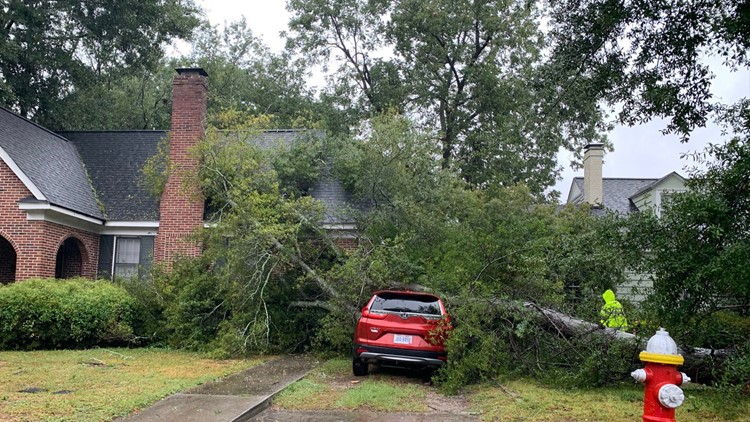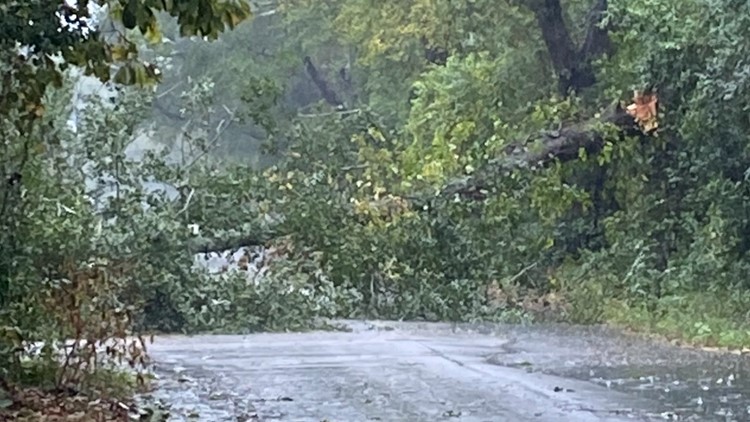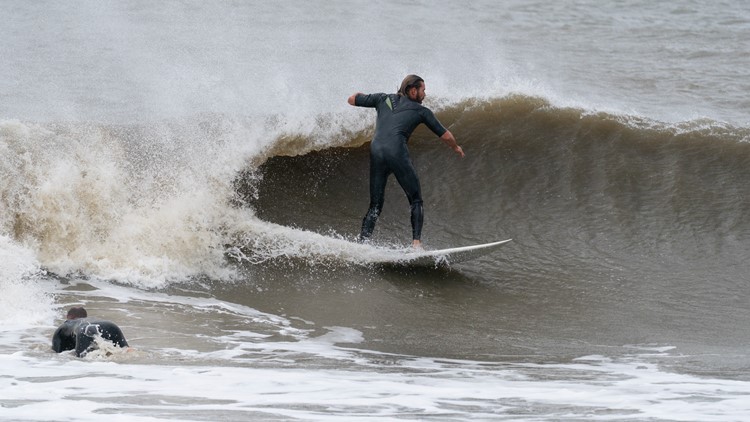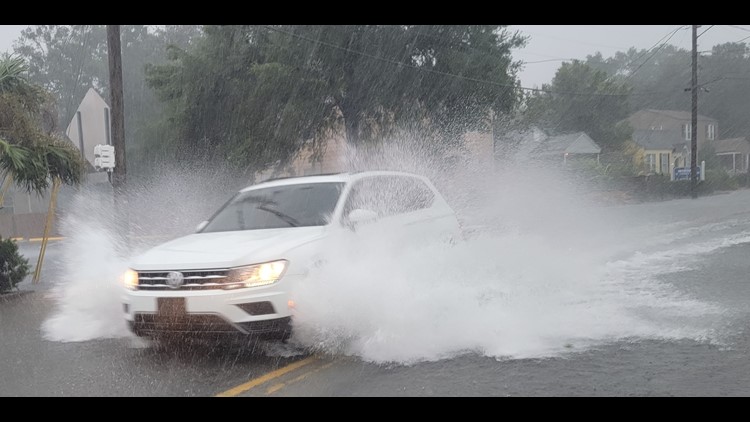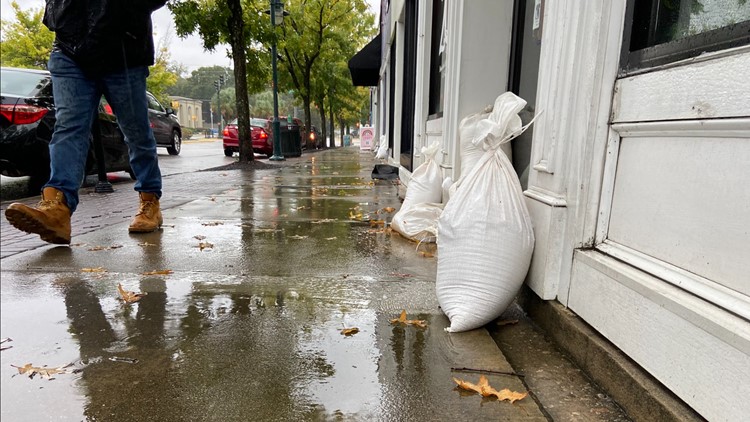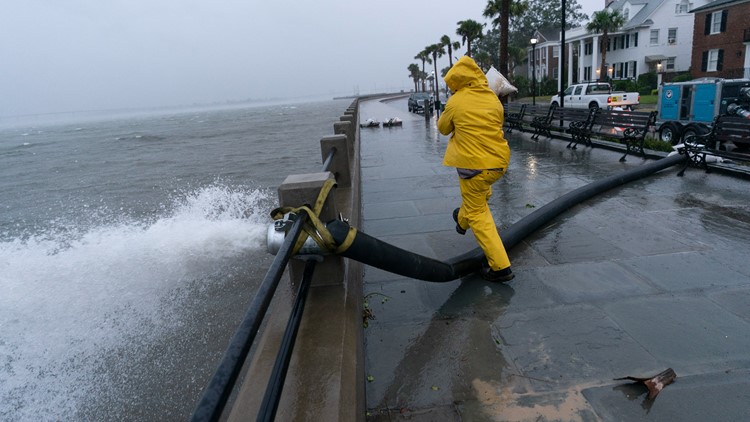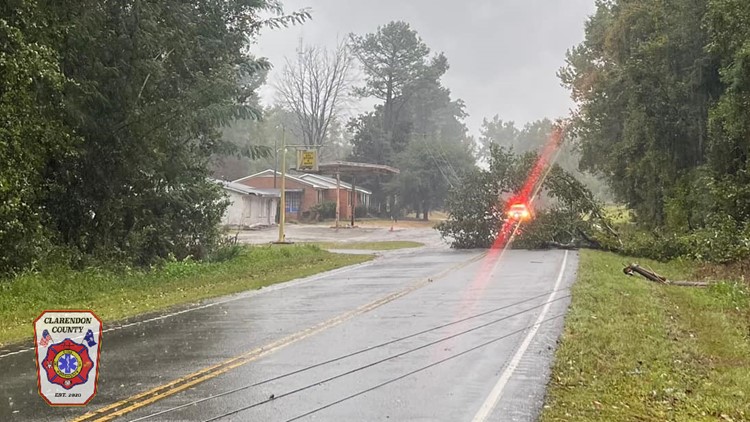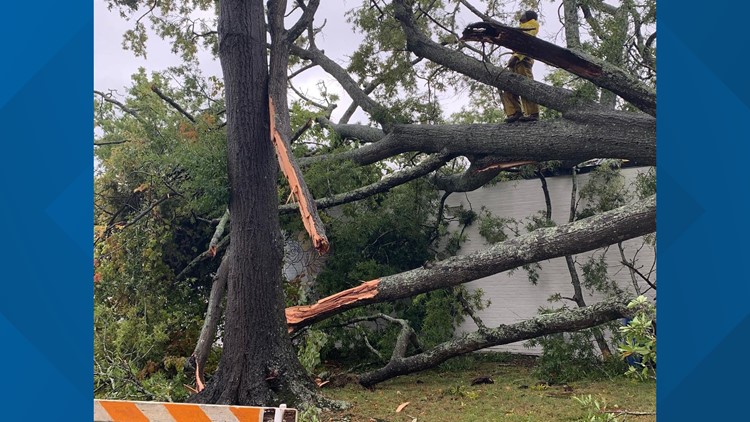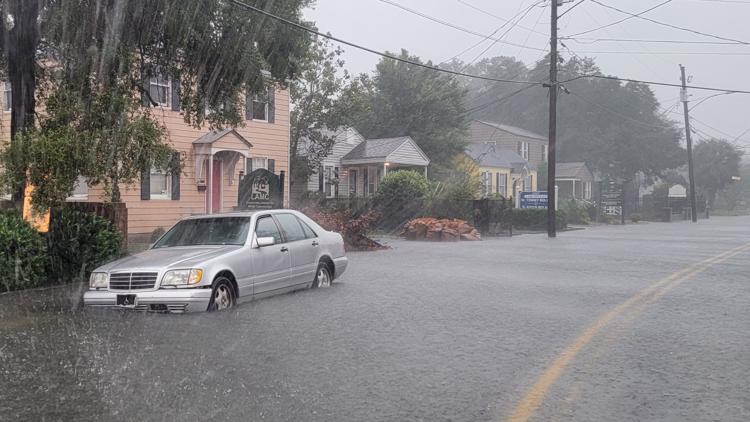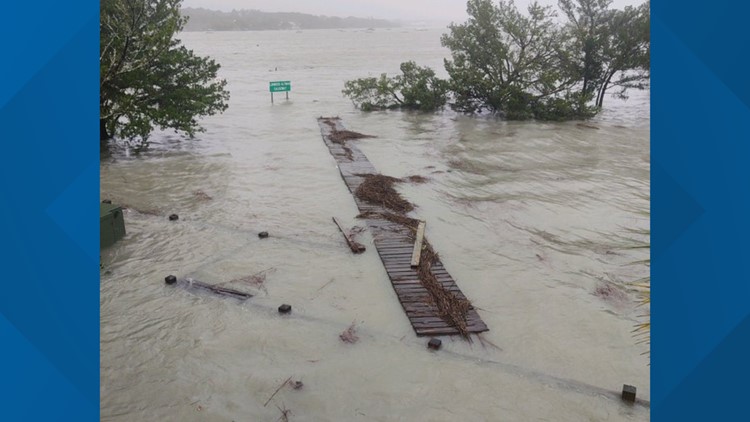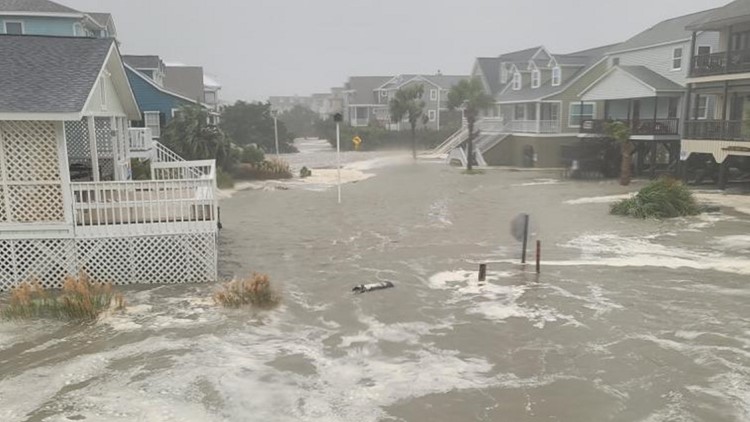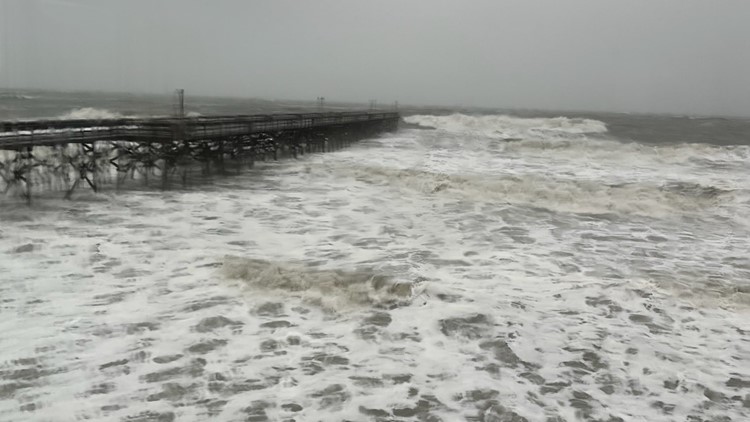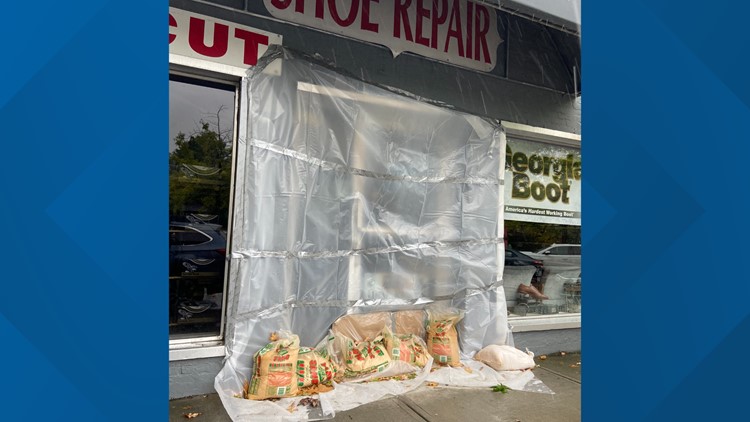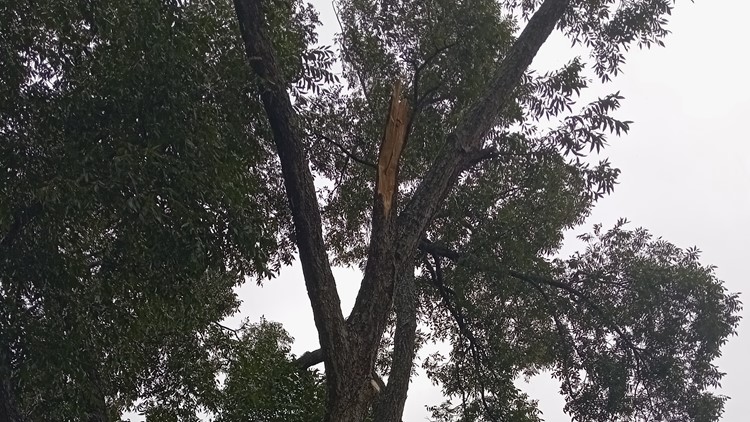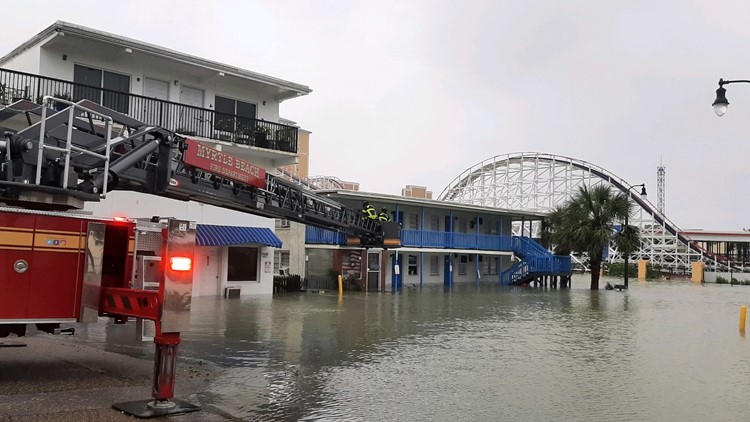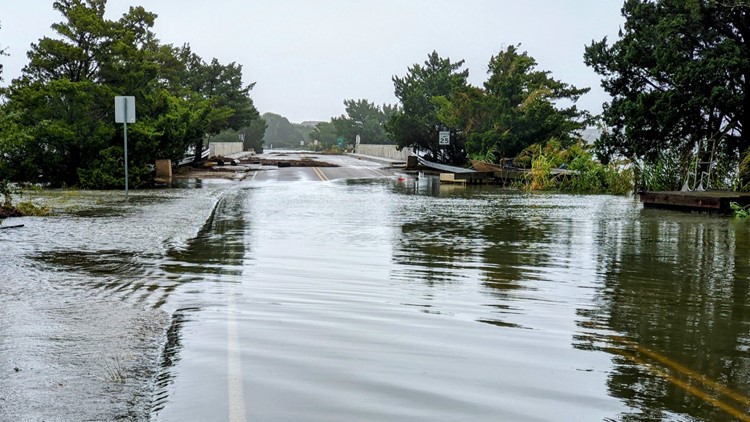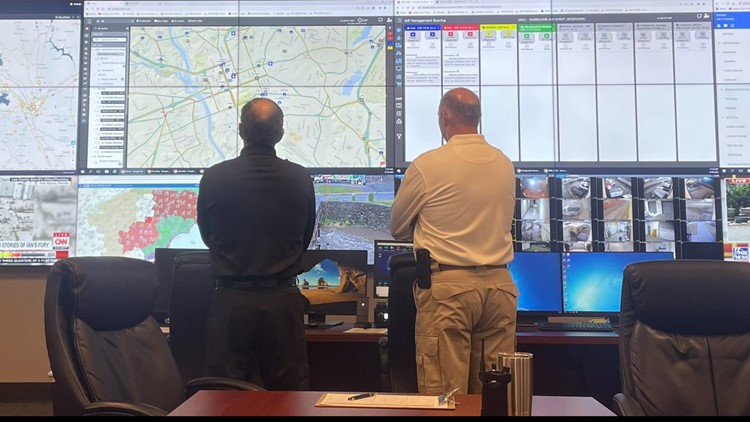COLUMBIA, S.C. — Ian has left South Carolina after pushing through South Carolina all day Friday, bringing floodwaters to coastal cities and knocking out power to over 200,000 customers at its peak.
When it left the state the system still had 60 mile an hour winds but it had been been reclassified as Post-Tropical Cyclone Ian. The effects of the storm are largely the same; however, it means it no longer contains the structure of a tropical system and is instead a big blob of showers and storms.
The National Hurricane Center says Ian came ashore around 2:05 p.m. Eastern near Georgetown, South Carolina, about 35 miles south of Myrtle Beach. It's already brought storm surge on the coast and heavy rainfall and strong winds in other parts of the state.
Steady, heavy rain was reported across the state and storm surge and flooding took place in coastal areas. In Pawleys Island, only miles up from landfall, video and pictures showed flooded streets and damage. Police there said the end of the Pawleys Island pier collapsed and had floated away.
Many of those hardest hit areas were also left sitting in the dark, at least for a while. Over 218,000 outages were reported at the peak of the power loss just before 4 p.m. Friday.
South Carolina Department of Transportation Director Christi Hall said even before the storm came ashore, her agency had to clear 200 trees that had fallen on roads.
Rain was a problem even further inland. In the Oakland community in Sumter county over five inches of rain fell, and over in Santee in Orangeburg County, four inches came down.
President Joe Biden has already approved an emergency declaration for the state meaning federal assistance to the state can begin. South Carolina Gov. Henry McMaster confirmed that he'd spoken with the President Friday morning and the White House had been helpful and cooperative.
McMaster also warned that even though the effects of the storm are waning, they shouldn't let their guard down.
"This is not as bad as it could have been," McMaster said. "A lot of prayers have been answered."
The last time a hurricane made landfall in South Carolina was Hurricane Matthew in 2016, although other storms have affected the state's weather in other ways in the last few years.

